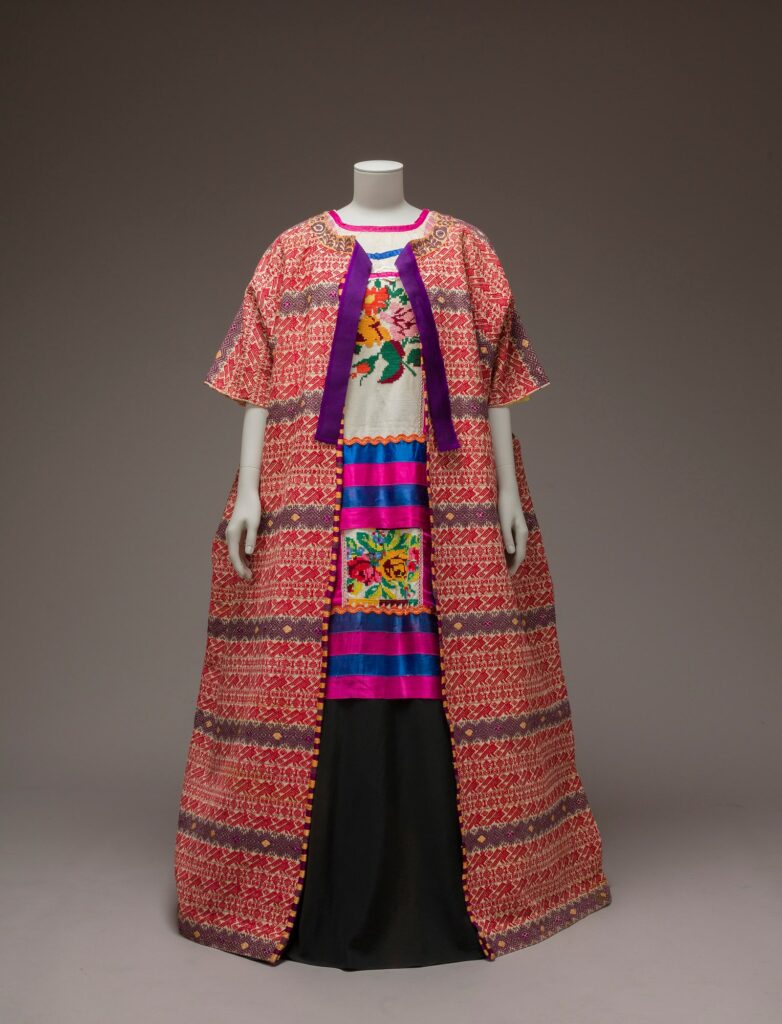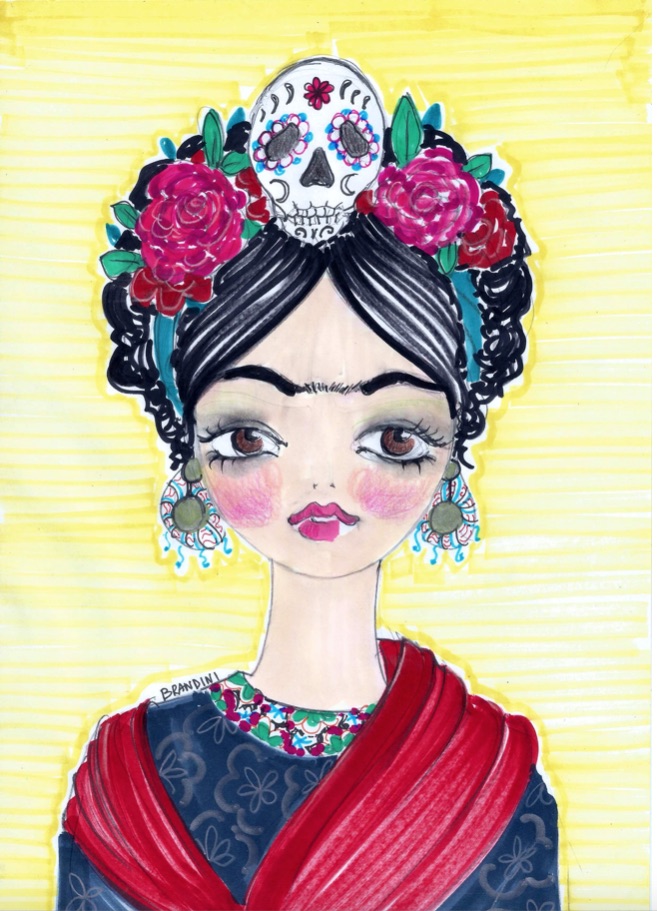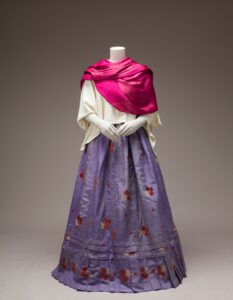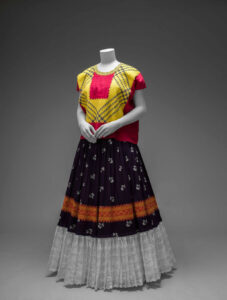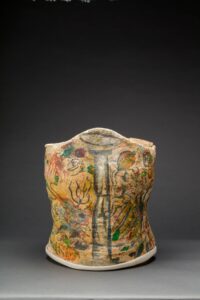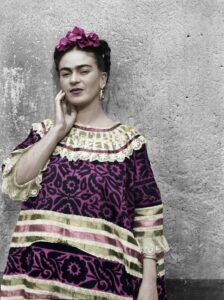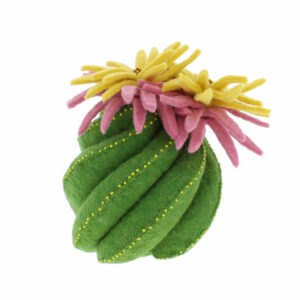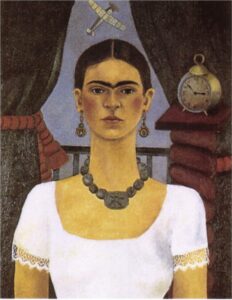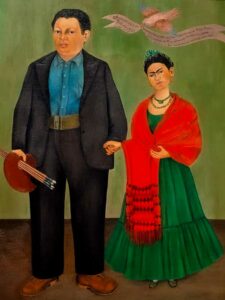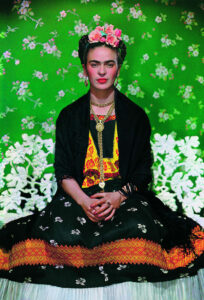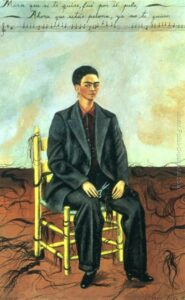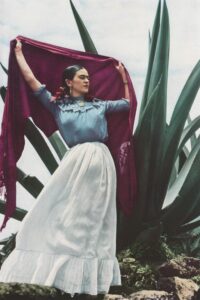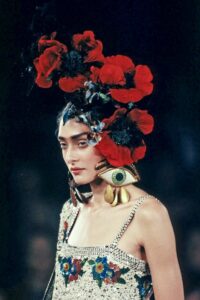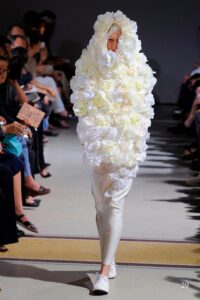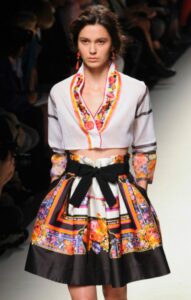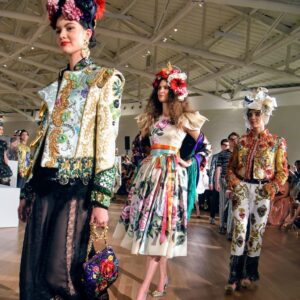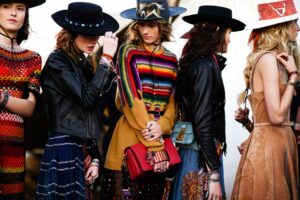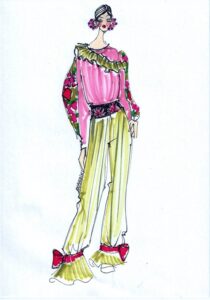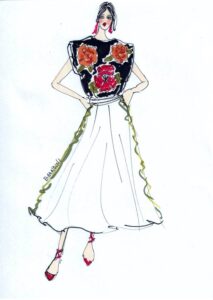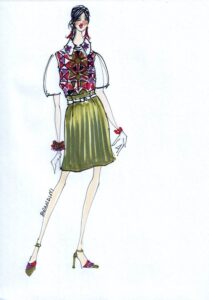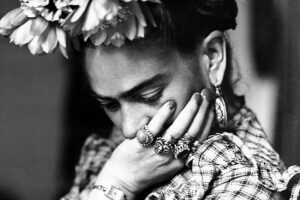Frida Kahlo dress, Museo Frida Kahlo, Mexico City
“La pequena Frida” by Beatrice Brandini
Frida Kahlo has become a cult figure for mass society. A true pop icon, she has been represented in the form of a doll, a cup, a poster and through every other existing trinket, trivializing her figure, so much as to undermine her pictorial and social merits.
Frida Kahlo dress, Museo Frida Kahlo, Mexico City
Hand painted corset by Frida Kahlo
A few years ago I already dedicated a post to this extraordinary artist on the occasion of the beautiful exhibition at the Scuderie del Quirinale (https://www.beatricebrandini.it/frida-kahlo-art-and-spirit/?lang=en), however it is important to talk about her again in a different interpretation, the one I love the most, that is through her clothes.
An image of Frida Kahlo
Every Spring – Summer it is customary to see a tribute to Kahlo on the catwalks of some designers or maisons. Her colors, her accessories, and above all her clothes, are so interesting and full of inspiration that they will never go out of style. Nonetheless, we often focus only on the folkloric image of these “customs”, forgetting that for Frida Kahlo they were much more. In fact, the artist paid obsessive attention to what she was wearing, every single garment had a poetic, historical, social, political meaning.
A felt flower clip made by Kahlo
Tunics, men’s suits, shawls, orthopedic corsets, full skirts, have never been just ornaments or artificial decorations, but every choice of clothing was for Frida an identity and ideological choice.
“Self-Portrait – Time Flies” by Frida Kahlo, 1929 Antony Bryan Collection
“Self-Portrait with Diego Rivera” by Frida Kahlo, 1931 San Francisco Museum of Modern Art
The change in style, from an initially more European taste to a strongly Mexican identity, reflects the meeting with Diego Rivera. In the Self-Portrait – Time Flies, every detail symbolizes the desire to belong to Mexican culture. The stone necklace and earrings refer to the Aztec, colonial heritage, symbol of a mixed nation. In the self-portrait with Diego Rivera, from 1931, the red shawl, borrowed from a maid, testifies to his Marxist political convictions.
Frida Kahlo photographed by Nickolas Muray in 1939
As well as the beloved costumes of the Tehuane women (known by the name of Tehuanas, famous for their wonderful embroidery works, full name of the Mexican city is Santo Domingo Tehuantepec), which Frida wore in social evenings in New York as in Paris and widely reinterpreted and disseminated in the pages of Vanity Fair or Vogue America.
“Self-Portrait with Short Hair” by Frida Kahlo, 1940 – MOMA, New York
Or again in the self-portrait with short hair, in which a Frida Kahlo in men’s clothes screams her independence, a powerful slogan to her being a feminist (she had definitively closed the relationship with Rivera), free, self-sufficient, emancipated.
Another beautiful image of Frida Kahlo, photo by Toni Frissell for Vogue USA, 1937
In times in which imperfection and inclusion are praised more and more, rebelling against the dictates of advertising (although now the commercials propose a common ideal, sometimes excessively “complex” and, as with all things, too much in the sense opposite), Frida Kahlo painted herself, without filters, transmitting her own imperfection (the unibrow, the moustache, the crowns of flowers in her hair). The narrative of the different enters and is part of her art, therefore the wheelchair, the prostheses or the facial hair are symbols and signs of emancipation. Frida seems to be screaming “I don’t have to hide what I am”.
“I have always painted my reality, not my dreams”. Frida Kahlo
Jean Paul Gaultier Collection 1997 – Comme des Garçon Collection
Alberta Ferretti Collection, 2014 – Dolce & Gabbana Haute Couture Collection, 2018 – Dior Resort Collection, 2018
There are many designers who have been inspired by her. She legendary the collection of Jean Paul Gaultier of 1997, and again Rei Kawakubo, Karl Lagerfeld, Moschino, Maria Grazia Chiuri for Dior.
Mood “Frida” by Beatrice Brandini
Frida Kahlo
Frida will continue to inspire and transmit an immense joie de vivre (despite the adversities that life had reserved for her), leaving a legacy that is worth more than any work of art, feeling free to express herself and proud of who we are.
Good life to everyone!
Beatrice


